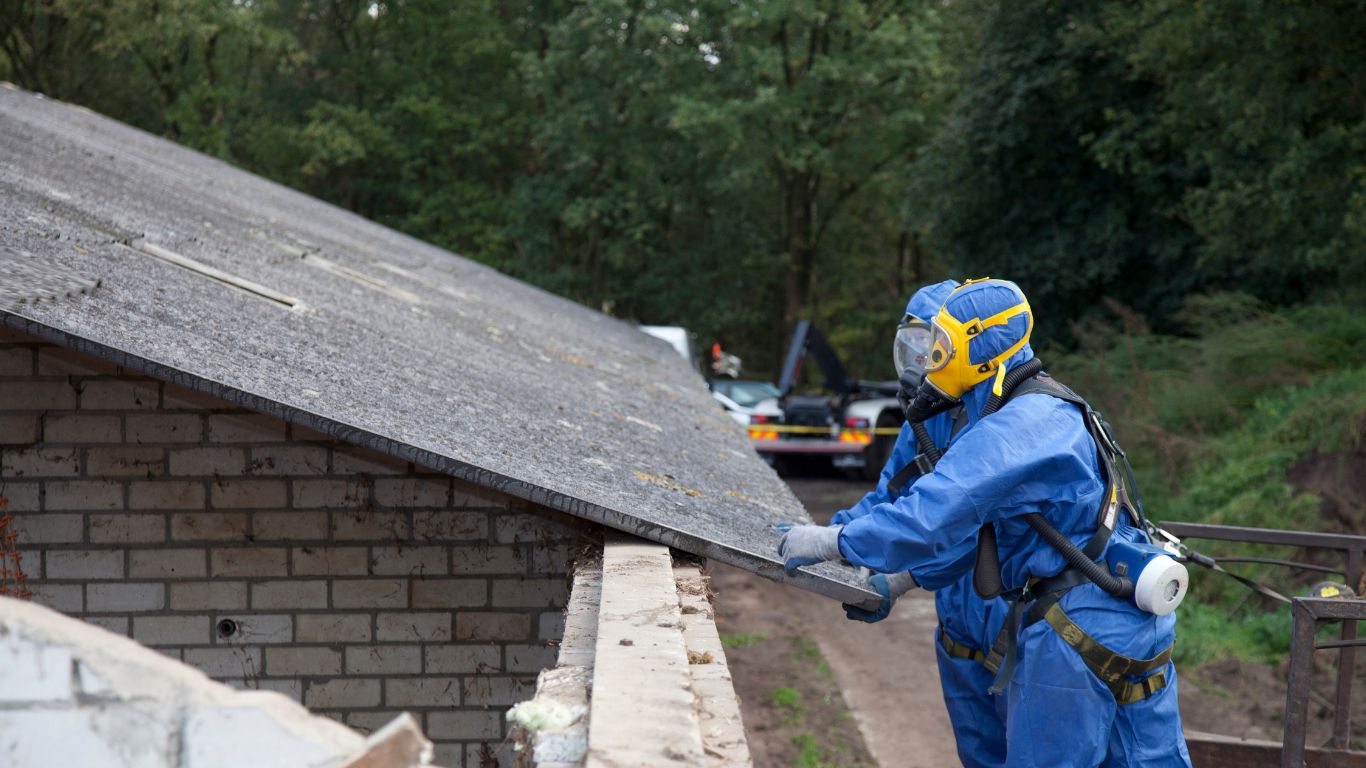
Asbestos is a naturally occurring mineral once widely celebrated as a “miracle fiber” for its strength, flexibility, and resistance to heat, fire, chemicals, and electricity. Because it was abundant, affordable, and easy to work with, asbestos was used in over 3,000 products—from floor and ceiling tiles to fireproofing sprays, brake pads, roofing materials, and protective clothing.
Mined primarily from open-pit sites, especially in Canada, asbestos was incorporated into homes, vehicles, and industrial equipment throughout much of the 20th century. The most common types found in building materials in the United States are chrysotile (white asbestos), amosite (brown asbestos), and crocidolite (blue asbestos).
While asbestos was once valued for its usefulness, serious health risks became clear as evidence showed that workers with long-term, heavy exposure—especially in shipyards, factories, and mills—were developing dangerous diseases.
Asbestos fiber’s aerodynamic shape and microscopic size allow them to float in the air for up to 72 hours where they can be inhaled or ingested. Over time, this can lead to asbestosis (a chronic, non-cancerous lung disease), lung cancer, digestive system cancers, and mesothelioma—a rare and aggressive cancer that affects the lining of the lungs or abdomen and is almost always fatal. These diseases typically take years to appear and often show no early symptoms. Smoking dramatically increases the risk of asbestos-related lung cancer.
Watch this video about how to prevent asbestos contamination
Regulations
Asbestos is a hazardous air pollutant that is regulated by the National Emission Standards for Hazardous Air Pollutants (NESHAP), under the Clean Air Act. The US EPA has also established specific rules for managing asbestos in schools under the Asbestos Hazard Emergency Response Act (AHERA). Maryland has its own regulations.
We oversee asbestos through several programs:
- Air & Radiation Administration licenses asbestos contractors, ensures proper training for workers (COMAR 26.11.21 and 26.11.23), and conducts compliance inspections in schools.
- Water & Science Administration monitors asbestos in drinking water, maintaining a federal safety standard of 7 million fibers per liter.
- Land & Materials Administration issues permits for landfills that accept asbestos waste and ensures proper disposal.
For more information, click here to contact us.